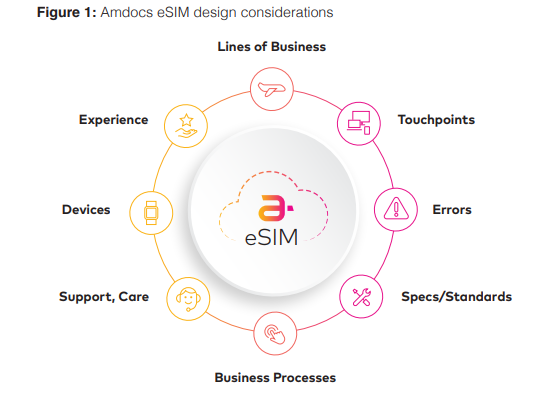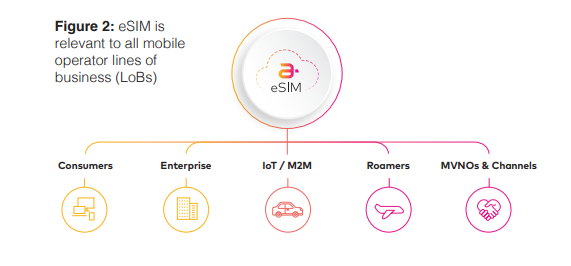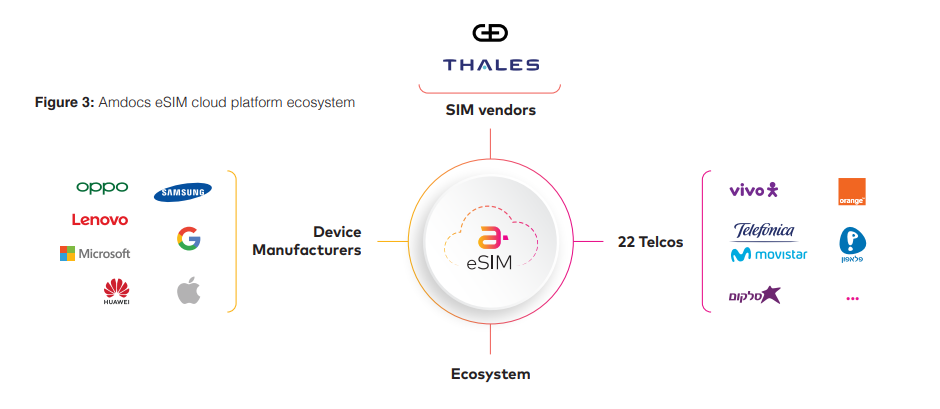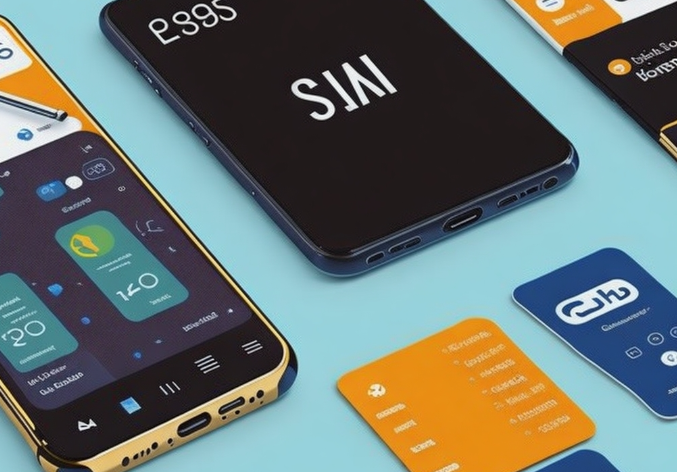The news is in. It’s the moment that we have been waiting for. The sign that strongly signals that the end of the plastic SIM card is near.
Apple has announced that all iPhone 14 models sold in the US will not have a built-in SIM card tray and instead will rely entirely on embedded SIM (eSIM) technology. Tech specs on Apple’s website confirm the iPhone 14, iPhone 14 Plus, iPhone 14 Pro and iPhone 14 Pro Max are not compatible with physical SIM cards and instead have dual eSIM support, allowing for multiple cellular plans to be activated on a single device.
What’s an eSIM?
An eSIM is an embedded, digital SIM that enables users to activate a cellular plan from a mobile network operator (MNO) without the need for a physical SIM card in the device. Original equipment manufacturers such as Apple and Samsung have increasingly offered eSIM-enabled devices, while more than 200 MNOs in over 70 countries already provide eSIM provisioning and management – but never has such a move previously happened.

Since the first eSIM emerged nearly seven years ago, Amdocs quickly understood that this technology would need to become a working service. There was a need for a system that would enable the world to enjoy the technology when the time was right, when plastic would no longer be ideal.
September 2022 marks a special milestone for the eSIM market. In a recent survey by Amdocs – The eSIM Consumer Pulse 2022 – it was found that there was a strong appetite for the enhanced flexibility, convenience, speed and sustainability enabled by eSIM technology. The research was commissioned by Amdocs and conducted by global market research firm Dynata and included 2,500 consumers across the US, UK and Australia. The results reveal that 81% of consumers are either actively in favour or open to the idea of an eSIM-only future for smartphones, compared to just 19% who aren’t ready. Meanwhile 58% of the consumers want their MNO to integrate eSIM into their offering while only 15% said they don’t.
What benefits does eSIM bring?
The biggest benefit of eSIM technology according to one in three (32%) consumers is the ability to switch providers and plans in an instant. One in five (21%) found the reduction in hassle compared to buying a physical SIM card to be the most important benefit, while 13% were excited by the prospect of a fully digital experience, with no need to remove and insert a plastic SIM. The chance to avoid roaming charges when travelling abroad also attracted the interest of respondents, as did the chance to access enhanced device features and the environmental benefits derived from the move away from plastic SIM cards.

More interesting findings
The survey also found very low awareness levels amongst the people we surveyed. While only 32% believed their devices had eSIM functionality, when we checked their phone models, the actual proportion that supported the technology was a whopping 74%. And of the 75% who said their device was not eSIM-compatible, our checks revealed that the majority were wrong.
Implementing eSIM can be long journey so Amdocs advises MNOs to start creating a careful, strategic approach now, and then act to implement it as an integrated, holistic offering. It’s not complicated but it can take time and planning.
As mentioned earlier, the smartphone market will be moving soon towards adopting eSIM on a large scale. Thus, it’s critical for service providers to make sure they have an eSIM offering for smartphones that’s rich and reliable. Richness means that the smartphone eSIM service must offer all the capabilities and lifecycle management features that the plastic SIM card offers. This is key to successful consumer adoption which is only a matter of time.
Furthermore, the user experience must be simple. The plastic SIM cards have done a very good job – they’re straightforward. They’re easy. They make sense to the average consumer. If you need to transfer a SIM, for example, all you must do is to simply take one out of your phone SIM tray and put in a new one or put the old one into a new device. How can you do that digitally?
This level of simplicity must be maintained. Yet at the same time – with upgrades, with changes – you need to bring a lot more value, which the digital world can offer. For example, you need to support the ability to have multiple eSIMs on the same device, to send a profile across the network, deactivate it remotely, and to lock a specific SIM to a specific device, which can’t be done with the traditional plastic SIM card. Change is hard and the consumer market will only be receptive if there is something to gain.
This falls into the important realm of the customer experience. It is a critical aspect. The web is full of user complaints about eSIM fails – download, activation, deletion – and users feel lost in this new complex experience. They must be able to access and manage the eSIM from any touchpoint, including retail stores, self-service apps, carrier apps and points of sale. Users need to be able to easily and intuitively, with several simple clicks, get what they want done and solve any issue.
The user experience is key so there’s a strong need for all the back-end systems to play together in harmony. When a user tries to download an eSIM and activate it, they do not care that there are OEM, eSIM database vendors involved, in addition to its telecoms BSS, provisioning and customer care systems. For a superb user experience, someone needs to make sure this complete ecosystem is working very tightly together, and with full visibility, access, and control to do everything needed, whenever and by whoever needs to take action. eSIM isn’t just another technology to be implemented and there will be effects on all lines-of-business and service providers will need to be able to adapt their systems and business processes and manage the full scope of needs.
For this purpose, Amdocs has created the Amdocs eSIM platform, which is tightly connected to all market players, orchestrates and manages the entire experience, assuring it is holistic, normalised and simple.

With the Amdocs eSIM platform the company can support service providers with eSIM integration, orchestration, adjustment of existing business processes and creation of new, ongoing development, onboarding new device manufacturers, upgrading CSR capabilities, and more. Amdocs is fully supporting all the different acquisition methods: QR, entitlements, discovery servers and all the GSMA versions. The Amdocs platform is serving dozens of MNOs from all over the world today, playing a strategic role in the acceleration of the eSIM revolution.
Comment on this article below or via Twitter: @VanillaPlus OR @jcvplus






